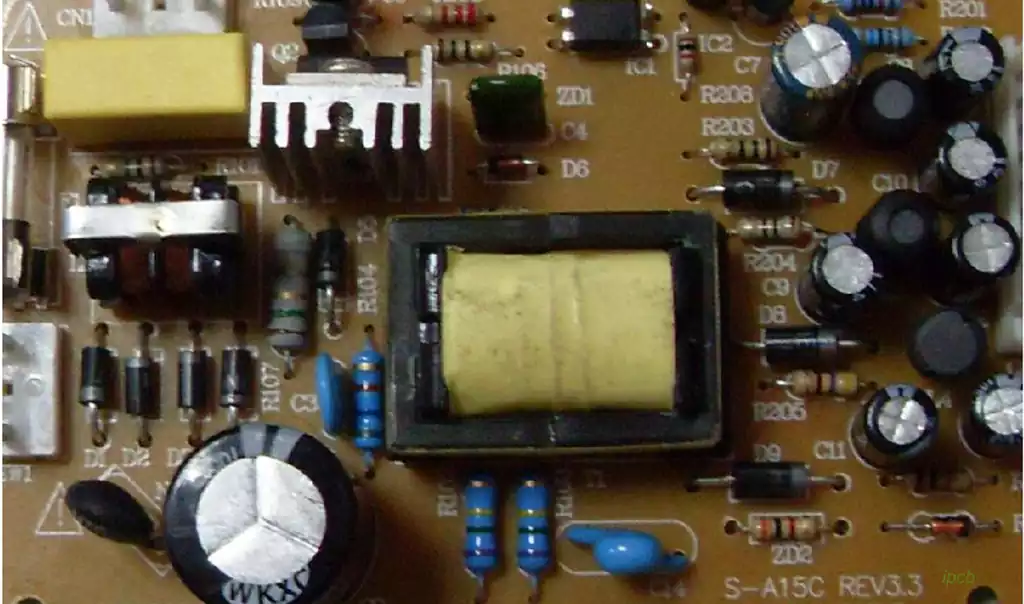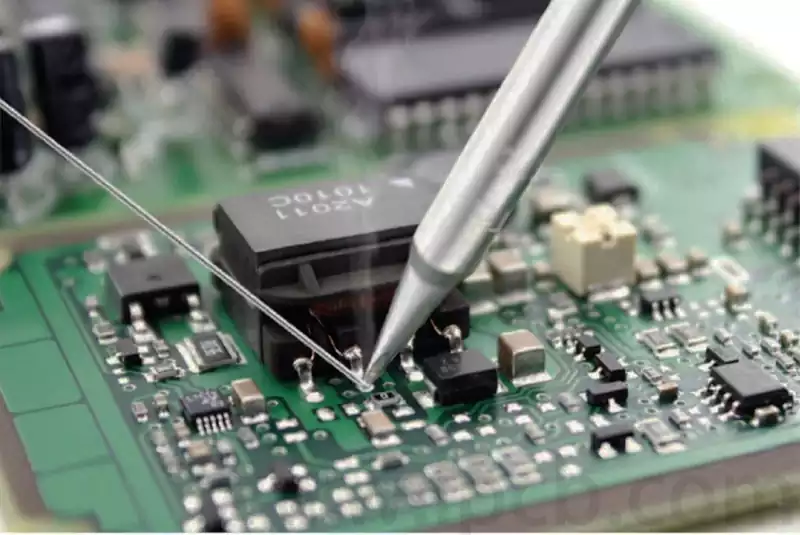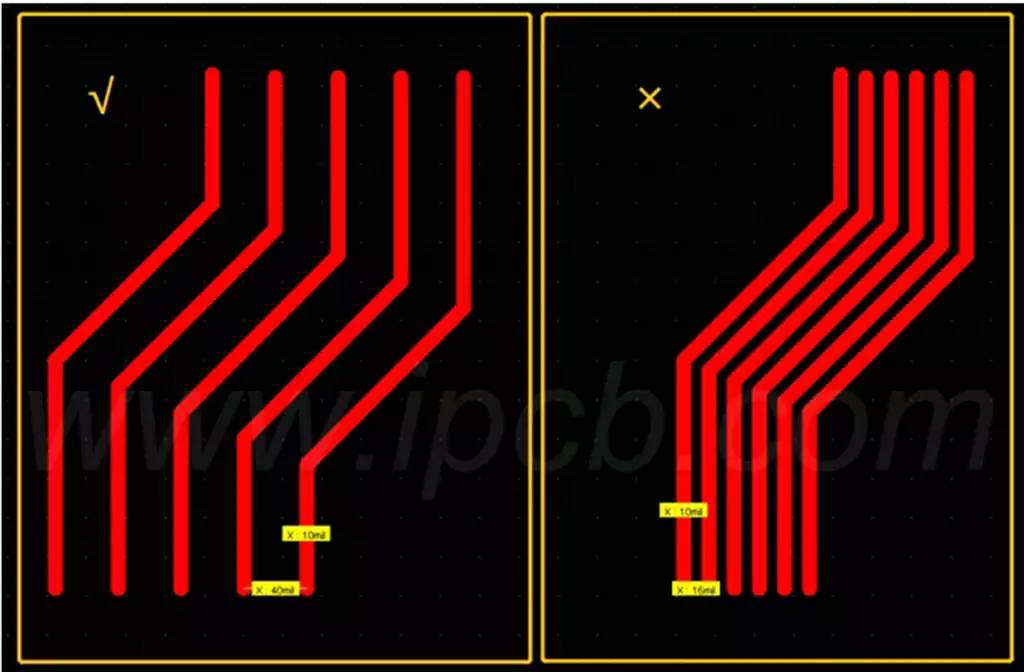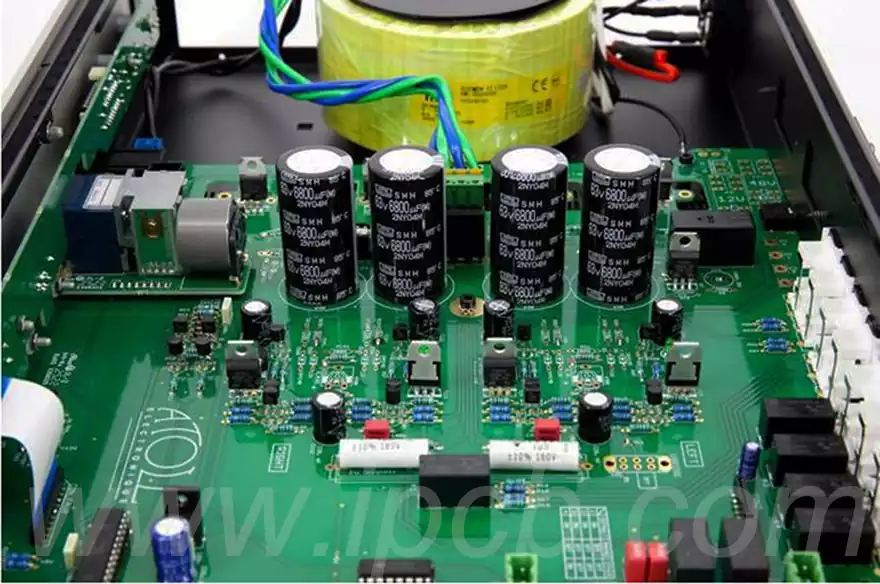Circuit board resistors are one of the most basic components used in PCBs. They are passive devices that block the flow of current in a circuit.PCB resistors control, divide, stabilize, connect circuits, etc. They come in a variety of resistance values, sizes, and tolerances to meet different circuit requirements. They come in a variety of resistance values, sizes, power ratings and tolerances to meet different circuit requirements.
Principle of Resistors.
It mainly consists of three parts: the resistor body as well as the backbone and the lead end, which are generally used for solid core resistor body. When the resistor is connected in series or parallel with other inductors, the working efficiency is not very high, and at this time the series resistance can be equivalent to the path, the inductive impedance is very small or even negligible, in this case, the resistor is equivalent to give full play to its resistive properties, equivalent to a pure resistor.
Classification:
Classified by resistance characteristics: fixed resistors, adjustable resistors (potentiometers), sensitive resistors (e.g., varistors, thermistors, photosensitive resistors, moisture-sensitive resistors, etc.).
Fixed Resistors can also be categorized into: Metal Film Resistors, Carbon Film Resistors, Chip Resistors, Cement Resistors, and so on.
Classified by volt-ampere characteristics: linear resistors, non-linear resistors.
Classification by Application: Current Limiting Resistors, Buck Resistors, Voltage Dividing Resistors, Protection Resistors, Start-up Resistors, Sampling Resistors, Decoupling Resistors, Signal Attenuation Resistors, etc.
Categorized by material: carbon film resistors, metal film resistors, wirewound resistors, cement resistors, etc..
In addition, there are some special types of resistors, such as insurance resistors (fusing resistors), non-inductive resistors. There are many types of resistors, and choosing the right resistor requires consideration of its resistance value, precision, power, temperature coefficient and other parameters to meet the needs of circuit board design.

Functions of Resistors
- Voltage divider function of resistors in circuits
Two resistors are connected in series to reduce the voltage to a suitable range, which is applicable to the case of excessive voltage. When the voltage U1 is too high, two resistors can be used to form a voltage divider circuit to reduce the voltage to U2, in accordance with the voltage divider formula U2=U1*R2/(R1+R2). - Shunt function of resistors in the circuit
Use a resistor in parallel to divert the excess current away from the circuit, which is suitable for the case of excessive current. Using a resistor in parallel to divert the excess current away applies to cases where the current is too high. - Damping Function
A resistor is connected in series between an inductor and a capacitor to reduce the Q value of the circuit, i.e., the quality factor, and is used in oscillating circuits. The resistor in this circuit is called a damping resistor, and their Q value satisfies the formula Q=1/R*sqrt(L/C), where R is the resistance value of the resistor, L is the inductance value of the inductor, and C is the capacitance value of the capacitor. - RC Circuit
A combination of resistors and capacitors is used to realize the functions of time delay, integration, filtering, etc., which is applicable to various signal processing circuits. - Negative Feedback
A resistor is connected between the input and output of a circuit to reduce the amplification of the circuit and improve the stability of the circuit, applicable to amplifier circuits. - Current limiting and protection function
A resistor is connected in series with the electronic component to be protected to limit the magnitude of the current or voltage, which is suitable for preventing the component from being damaged or burnt. The resistors in such circuits are called protective resistors, and their currents or voltages satisfy Ohm’s law, i.e., U=IR, where U is the voltage, I is the current, and R is the resistance of the resistor. - Oscillation damping function
A resistor is connected in series in the coupling loop of a circuit to suppress the high frequency oscillation of the circuit, which is suitable for high performance amplifiers. - Isolation Function
A resistor is connected between different parts of the circuit to reduce the coupling between the circuits and is suitable for complex circuits. Resistors in such circuits are called isolation resistors, and their resistance value should be as large as possible so as not to affect the signal transmission of the circuit.
Circuit board resistors, as core components in PCB design, provide stable, precise and reliable control of circuits with their diverse functions and characteristics. Whether it is voltage and current sharing, damping, oscillation damping, or even negative feedback and isolation, resistors play an indispensable role in circuit design. Choosing the right resistor, taking into account parameters such as resistance, accuracy, power and temperature coefficient, is critical to achieving circuit stability and efficiency



